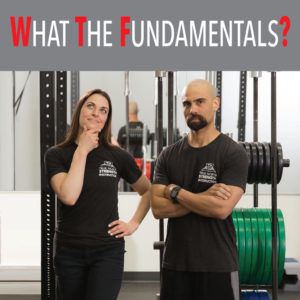Greetings, True North movement FANatics… welcome to our first entry in our breakdown on the fundamentals of movement.
The most important thing to keep in mind is that a lot of the exercise videos and demonstrations you keep seeing online are being done by people who have put in years of practice on the basics – plus, what you’re also not seeing (with the exception of the “gym fails” that make you cringe and look away) are the endless practice attempts before they achieve the shot that they’re willing to post!
To try and bring things back to their foundations and simplify the process, let’s start with what – in our opinion – is the MOST fundamental of the fundamentals: the squat.
Thinking about this in a different way, take the movement out of the gym. While the squat is a “vertical displacement of the hips” by textbook definitions, it’s also “sitting down and standing up”. So when people tell you that you “shouldn’t squat because it’s bad for your knees”, you should ask them how you’re supposed to sit at the dinner table or get up from bed in the morning, since both of these are “squatting”.
To learn how to squat properly, we recommend the “box squat” as a starting point – because having a box, chair or bench available will remove any fear of falling over backward. Begin by allowing yourself to put your weight on the box – focus on keeping a long spine, lowering yourself “between your feet” and keeping your weight slightly to the back of the foot – you don’t your heels coming up as you go down, but you also don’t want to rock back and have your toes pop up. Practice doing this on something that allows you to drop to 90⁰ or slightly below (not everyone can, should, or needs to drop their butt to their heels), and as you gain confidence and balance focus on just touching the chair rather than actually sitting down, paying attention to the depth you’re able to reach with control.

Once you’ve got the box squat mastered, take away the training wheels and remove the bench. Practice everything listed above, but now learn how to control the depth without the physical cue of a target – and without losing all of the form you’ve been working on.

Finally, once you’re confident with doing the squat “freestyle” – add some weight! We like to start with the “goblet” position, using a dumbbell or kettlebell because a) it doesn’t put a load down on top of your shoulders, and b) having the weight in front of you can actually help in learning to “engage your core” (in other words, how to stabilize through your trunk) while squatting.

We hope you find this helpful – and feel free to share it with anyone that might be looking for a little guidance!


